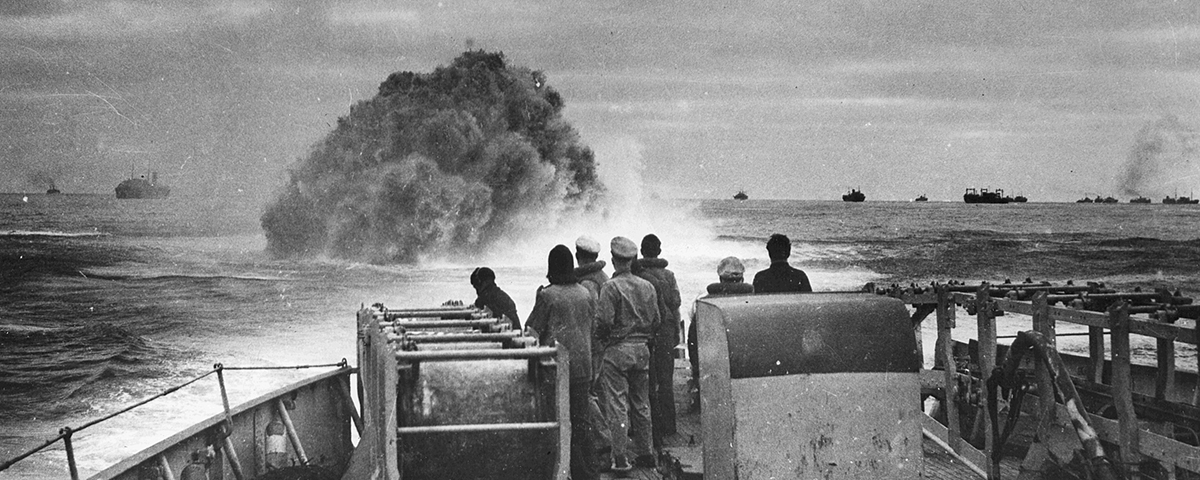From the start, Blackett believed the key to making OR a success was to have smart people who understood mathematics, who could look at a problem with an open mind, and above all who could ask the right questions and challenge the existing rules and dogmas that military organizations were prone to—rather than possess any specific scientific expertise in any specific fields. At Coastal Command he quickly recruited a motley but brilliant crew of scientists; one of his recruits described the section as consisting of “three physicists, four mathematicians, two astronomers, and eight physiologists and biologists, including an expert on the sex life of the oyster.”
Blackett almost immediately began to shake things up, and to get the brass to sit up and notice. One night in April 1941 he was visiting the navy’s command center in Liverpool; on the wall was a huge chart of the Western Approaches showing the known positions of U-boats in the area. Scribbling numbers on the back of an envelope, Blackett calculated that given the number of hours Coastal Command aircraft were in the air searching and the amount of time the U-boats were known to spend on the surface, the British planes should have been spotting four times as many enemy subs as they were. Apparently, the U-boat captains spotted the approaching planes before the planes spotted them; four times out of five, the U-boats were able to dive before they could be seen. But why?
After weeks of probing, Blackett stumbled on the answer. The undersides of the airplanes—mostly bombers pressed into service for the antisubmarine patrols—were painted black, standard camouflage for night bombing operations. But in daylight, under the mainly overcast skies of the North Atlantic, black was the worst color to use. A few experiments were quickly run and confirmed Blackett’s hypothesis: the black-painted planes could easily be seen miles away. The planes were promptly repainted white, and the number of successful sightings and sinkings of U-boats soared. Under the best conditions, Blackett’s group now calculated, as few as 10 percent of surfaced U-boats were eluding detection by approaching air patrols, down from more than two-thirds before the paint change.
Though they never completely broke down the suspicion and hostility the regular army and navy officers held toward outsiders, the scientists soon found that their results commanded respect, even if they didn’t. One member of Blackett’s OR section, T. E. Easterfield, recalled being greeted by one Coastal Command base commander with ill-disguised irritation: “Another of these scientists! What the hell can they find to do?” But the study Easterfield was working on—examining maintenance scheduling for patrol aircraft—soon produced a simple formula for planning routine maintenance that doubled the number of hours each plane could fly per month. The method was swiftly adopted by all Coastal Command units. Cecil Gordon, the OR official in charge of the study, was a biologist who combined “a brilliant mind” and “an abrasive personality,” Easterfield said, but even the old-school military men conceded that while he might be mad, at least he got things done. “Marvelously efficient chap,” said one older officer after Gordon had swept through. “Of course, he was no gentleman.”
In March 1942, as the loss of Allied merchantmen to German U-boats was escalating alarmingly, an MIT physics professor named Philip Morse was on a ferry from Delaware to Newport News, Virginia. The ferry passed a tanker limping into port with a 10-foot-long hole in its bow, the scar of a torpedo attack it had miraculously survived. Morse found himself wondering who, if anyone, was analyzing the U-boat threat and how to respond to it.
America’s entry into the war three months earlier had caught the nation woefully unprepared to deal with the swarms of U-boats that instantly appeared along the coast. The U.S. Navy lacked enough escort vessels to protect coastal shipping and stubbornly insisted that to order merchantmen to travel in convoys without protection would only make things worse. Fearing a loss of tourist trade, Miami and other resort cities resisted ordering blackouts. And so night after night U-boats would surface inshore to find fat targets vividly silhouetted against a backdrop of blazing lights.





